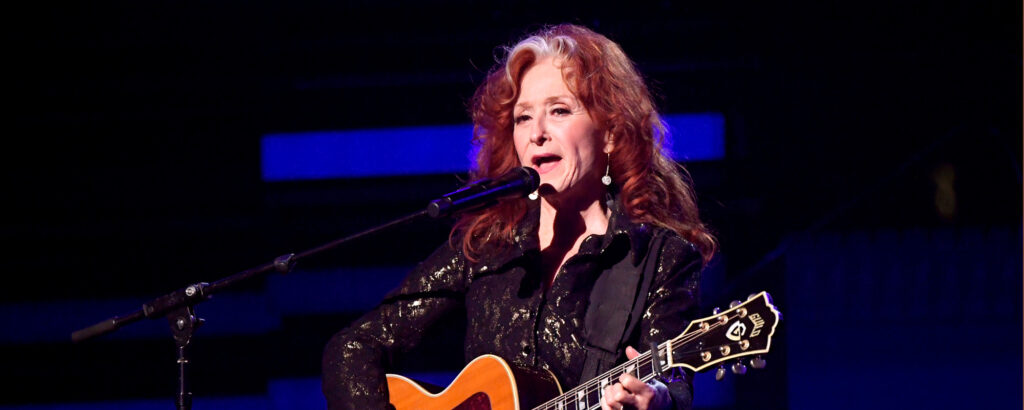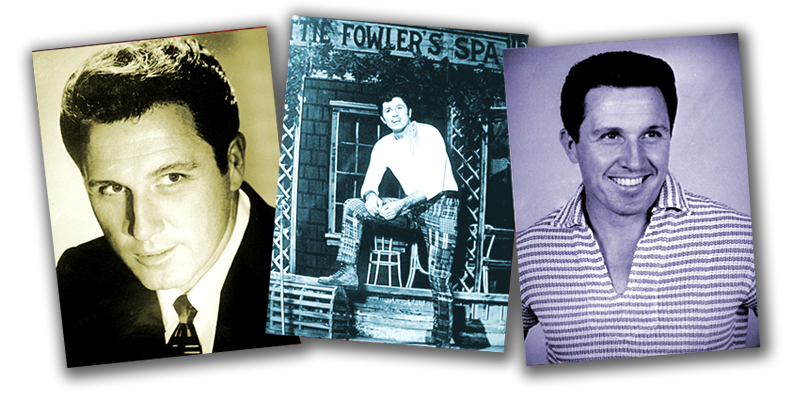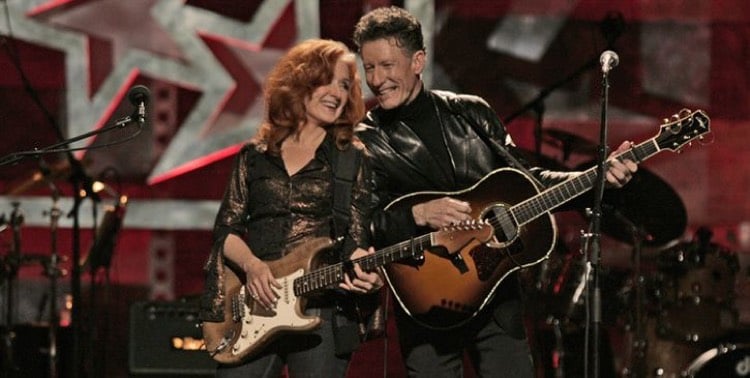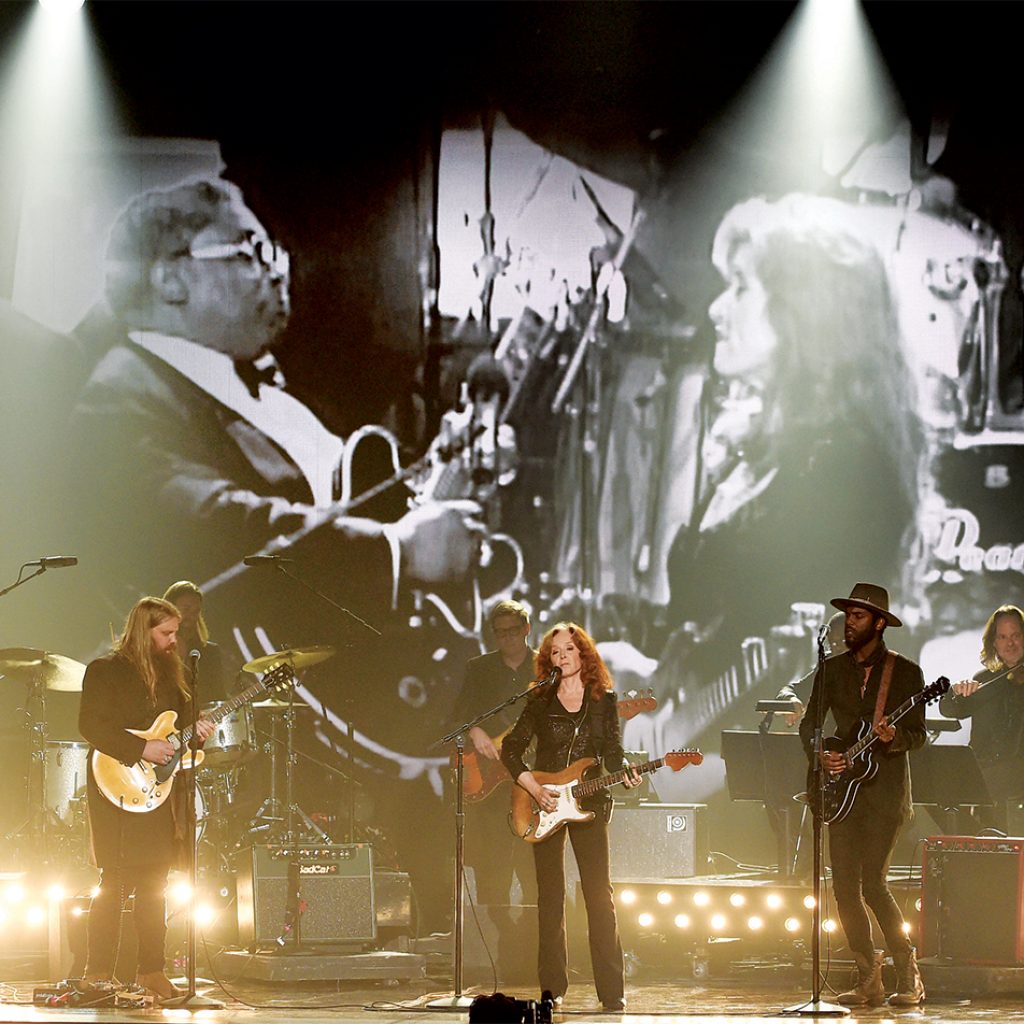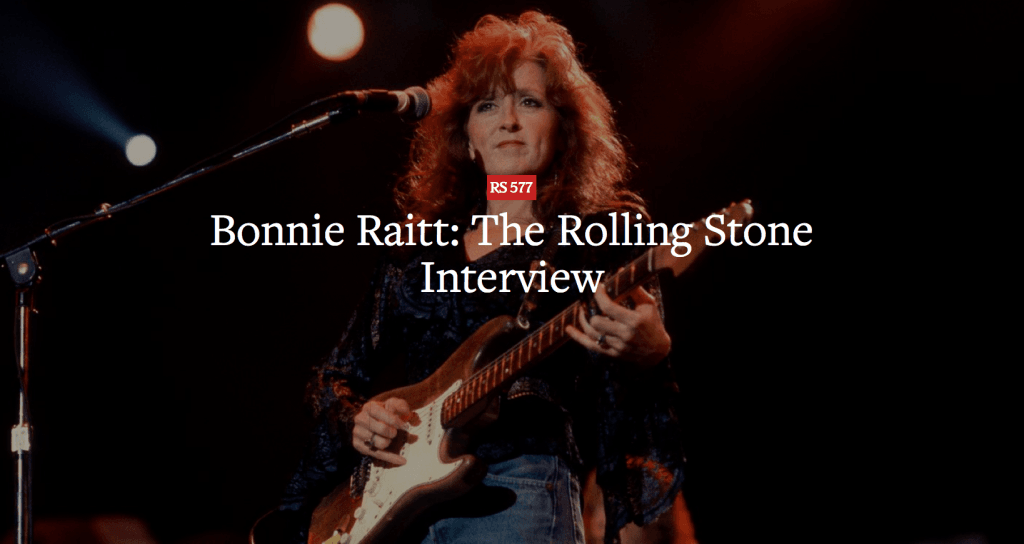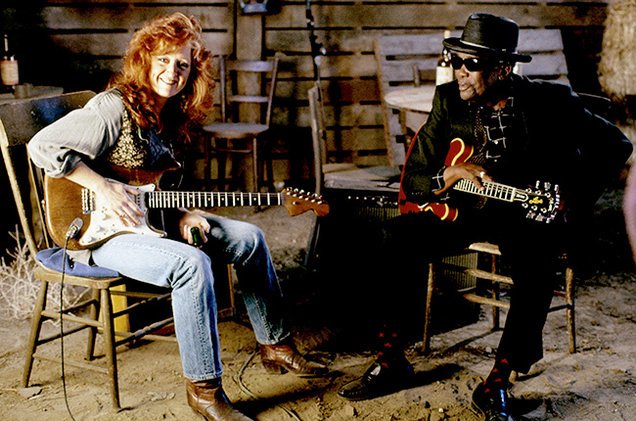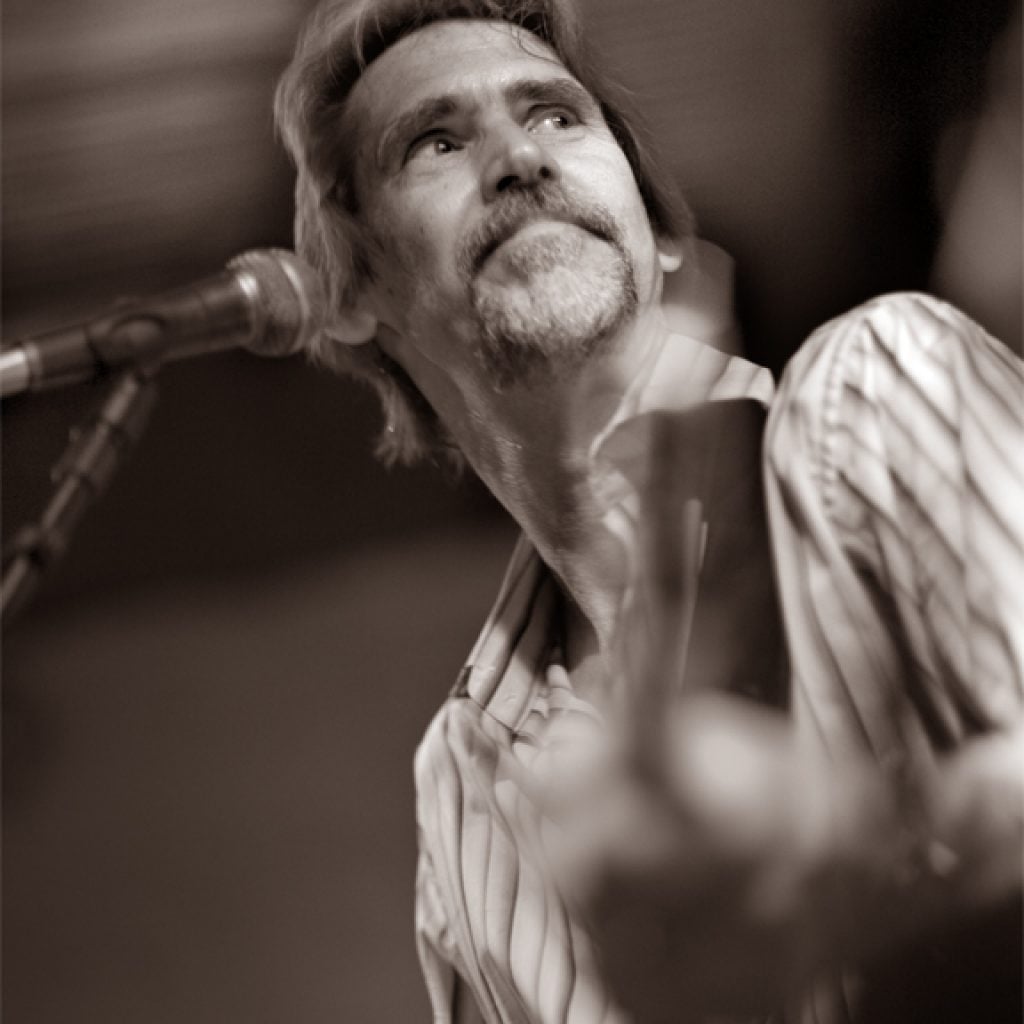

Watching the Kennedy Center Honors is my yearly ritual. Thus far, two blues giants have been honored on that night, B.B. King in 1995 and Buddy Guy in 2012.
And Bonnie Raitt is the one musician who was enlisted to fete both men on this distinguished evening. My question is: When will Bonnie be likewise honored?
She is already in the Rock and Roll and Blues Halls of Fame, is a ten time Grammy winner, and received the Lifetime Achievement Award for Performance from the Americana Music Association. Most recently, in January 2016, she was named to the Austin City Limits Hall of Fame with B.B. King and Kris Kristofferson. At a point when many musicians her age are on a greatest hits tour, she continues to record fresh songs and has been touring extensively for nearly 50 years.
Throughout each evening, the wisdom and maturity that Raitt embodies is transmitted effortlessly throughout the night. Whether speaking, singing, or laughing, her vocals contained a depth of vulnerability that makes it feel like you’re the only one she’s telling the pains or joys of life to. Though the contrast between her aggressive and dominating slide guitar and her easy, whiskey wrapped vocals are at the core of every show, it is Raitt and her ever gracious nods to her band, the crowd, or the masters of the blues that puts her every performance into the realm of transcendent.
Raitt’s notoriety as a role model cannot be overlooked. It’s possible that her 1971 self-titled debut record was one of the first rock albums to feature a woman brandishing an electric guitar, thus opening the door of possibilities for a generation of young women who, up to this point, were playing their electric guitars in solitude.

On that debut, Raitt also showcased the music of her blues mentors – Sippie Wallace, Tommy Johnson, Robert Johnson – brought blues harmonica legend Junior Wells and guitarist Paul Pena onboard, and, most importantly, developed the recording blueprint that would serve her through her 50-year journey.
“The process has been the same since my first record,” said Raitt. “And basically the recording of the record is the same. Most of the songs are new ways of saying something that are equally true to the songs I was singing on my first record. The only thing different on this record is that I custom wrote songs that I wanted to add into the show that I thought were missing from the live show.”
Dig In Deep, released February 26, 2016 on Raitt’s own Redwing Records, is her 20th record. It contains the music we’ve come to expect from any Raitt offering. There are knockout covers of her favorite singer-songwriters augmented with her own poignant originals which are all skillfully arranged by Raitt and her longtime touring band into a coherent read.
Raitt’s search for material begins as soon as the touring for Slipstream ended. “I do a tremendous amount of research that’s on-going. I spend a lot of time listening to a wide range of singer-songwriters who submit songs. I go through my record collection, the collections of others, and I read a lot of music magazines. I look for songs that don’t repeat what I’ve already said and reframe the same themes of heartache, betrayal, and loneliness.
“Once I line up the tunes, I know this band and I have something really special, so [to me] the finding and arranging the material is the creative part. I love to showcase songwriters that people may or may not know. I’ve been doing that ever since I covered songs by Chris Smither and Eric Kaz in the beginning. The Gordon Kennedy and Wayne Kirkpatrick song, ‘The Gypsy In Me,’ was written specifically for me. I’ve done one of their songs on the last three albums. And those songs have basically been the first singles from the record.
Ironically ‘The Gypsy In Me’ is the first single released on this record.
“I wasn’t familiar with Bonnie Bishop until my friend Al Anderson from NRBQ sent me a tune by this woman named Bonnie Bishop for Slipstream. Her singing on the demo was so devastating that I almost didn’t record it because I didn’t think I could do a better job. I did my own take on it and it ended up being the best song of 2012 named by New York Times reviewers. Her publisher sent me more songs and ‘Undone’ just floored me. Again, she did a killer version. So we did a very quiet, heartbreaking version where I just basically toned it down and made it very intimate.”
Raitt’s most intimate moments, however, surface with the final two songs, “You’ve Changed My Mind,” by Joe Henry, and her own “The Ones We Couldn’t Be.” The former was written in 2010 for Slipstream, the latter was written by Raitt on piano and features only her warm voice accompanied by Raitt’s somber piano and Patrick Warren’s keys. “When I want to write a song that’s reflective like that, I tend to write them on the piano. I wrote ‘Nick Of Time’ on the piano. There are just certain songs that lend themselves to the keyboard, and I have a little bit more facility with it.
“I had the idea for the song when I got the epiphany that when your family passes on or your relationships are over that it takes time before you realize the eye opening truth that you had as much to do with this relationship being the way it was as they did. At the time we always feel, ‘If only they weren’t acting like this or how sad it is that I don’t get to have this or that in a partner.’ What I realized is that others were suffering in the same way from me not being the one they thought I should be.”
That song has maturity, reconciliation, acceptance, and forgiveness. “There’s a lot regret in those ballads. That’s part of life, you have to sit in the dark and realize I could have done it better. And how heartbreaking it is that either side of the relationship lets it down.
“Because this album is pretty rockin’, it was daunting to figure out where to put certain songs. Even though I knew it was gonna be a complete emotional shift, they fit at the end. To me they go together as a coda, an added piece. ‘You’ve Changed My Mine,’ recorded in 2010, is really an incredible expression of how I came out of that period of loss and grief.”
But this record also rocks. “The Comin’ Round Is Going Through” is the song to play when you need five more minutes on the Stairmaster. It’s a Stonesstyled rocker featuring some cool word play amid Raitt and George Marinelli dueling guitars. “I wanted to write something that would make my blood boil with all the stuff I was writing about. To write something that felt exactly like what I was saying. I love to play when you have two guitars, it’s really fun to go back and forth.”
The opening cut, “Unintended Consequence Of Love,” co-written with Jon Cleary, is a fresh take on their love of funk. While her own Gospel piano song “What You’re Doin To Me,” gives her the opportunity to show off another valued member of her band, Mike Finnigan. “Mike Finnigan is one of the masters of the B-3. To be able to write a gospel shuffle for this killer group of musicians to play live.”
The engine that directs her band for decades is the rhythm section of James “Hutch” Hutchinson (bass) and Ricky Fataar (drums). “I don’t think it gets any more powerful and versatile and deep than Hutch Hutchinson and Ricky Fataar. You can ask almost any band and they all tell me that I have one of the best rhythm sections in the world. I totally agree. Hutch has been with me since 1983. Ricky was on the Green Light album, and then everything since Nick Of Time.

“Ricky and Hutch have an ability to hit every style of music which is a broad range. All these guys in my band are well read, they’re well educated musically and culturally, and they keep growing. We play for each other. We play to impress each other as we play to impress our peers and fans. Ricky and Hutch have been a joy and inspiration since I met them.” It’s this band in the studio and on-stage that is the palette
Raitt works with. “I basically do certain things really well. One of those things is to look for songs and arrange them. I use the band as much as I use my guitar. I just look for the deepest tunes and the ones that resonate with me at the time.
I put my heart into every record and the band works really hard to play great and make it sound fantastic.”
Raitt’s back-story is well chronicled. She came to the blues like so many of us, through the blues records in the mid-‘60s. But unlike us, upon her matriculation at Radcliffe in 1967, she came upon a thriving folk and blues scene, and sat knee to knee with first generation blues men and women like Son House, Sippie Wallace, Mississippi Fred McDowell, Muddy Waters, and Howlin’ Wolf and every other musician managed by Dick Waterman.
And, if the child is father of the adult, then Raitt is forever informed by those experiences.

“They are part of my DNA. Whether it’s Mississippi John Hurt or Mississippi Fred McDowell or J.B. Lenoir or Muddy or Howlin’ Wolf or Sippie Wallace, they all run through me. I was such a stone blues fan. And not just blues, but all music. I can’t separate my love of Howlin’ Wolf from the Rolling Stones or Ray Charles, Aretha Franklin, or Ruth Brown.
“I can’t even put a finger on who would have influenced me the most. That are all part of what goes in and then it comes out in the way you play, the choices of your phrasing and singing, the choices of songs, the way you put your rhythm section together, the way you phrase behind the beat or in front of it, it’s all informed by every influence you’ve ever had.

“But I also learned as much from my dad [John Raitt] as I did from watching Fred McDowell throw his head back and play. I didn’t learn how to sing torch blues songs from my dad, but there are things about his phrasing, the way he wraps around the words, the way he waits, and the emotion he puts in. It’s all incoming and it comes out in your guitar playing and your band and in the way that you feel and sing a song.
“I was always curious where the blues came from, so I’d ask Fred McDowell, “Which relative did you learn from? And where did he learn it?” I find it incredibly fascinating to investigate the influences on the people who knocked me out. And the great thing about being alive for young people today is that YouTube and the Internet make that infinitely possible.
“In our day, we didn’t have a chance to just go on a gadget on our desk and look at Willie Dixon. We had to wait until he came to our town. If we lived in L.A., we had to wait until we were older and could somehow get to Chicago. Now at your fingertips you can see 24/7 the greatest performance of all time of every single artist who was around to be filmed. Louis Armstrong, Fletcher Henderson, Helen Hume, early Ruth Brown, the Staple Singers. You can look at them in their early years.
“The Lippmann/Rau American Folk Blues Festival DVDs on Reelin’ in the Years is the greatest gift of my lifetime. If you never see anything else, I can’t recommend it more highly. And please pay for it because the filmmakers who made it deserve the money.
“And it just as important to go and hear the blues and R&B live. Go to the festivals and PAY money for the musician’s CD. Pay the artists who are out there. There are way too many blues clubs closing and so many of the greats have passed away. But with Shemekia Copeland, the Tedeschi Trucks band, the Alabama Shakes, every time I turn around, there’s another unbelievable new band or people playing at the top of their game.”
The next task for Raitt is the nearly two years touring in support of Dig In Deep. At 66 years young, Raitt is physically and emotionally ready to embark on this daunting endeavor. “I’ve been blessed with pretty good health and a strong constitution. I do yoga, I ride my bike on the road, I hike, and I get enough sleep. When I was 37, I looked around and saw that the partying lifestyle, not exercising or eating right, started to either look bad or feel bad.
I needed to make a big change. I’ve been sober for 30 years. What is really involved in the sobriety part is that you take inventory and pay attention to how you treat people and how you treat yourself.
“My parents told me the biggest challenge would be being able to withstand the loss of so many people that I love. When I was in my twenties, I lost five or six of the blues people I was so tight with. That lasted through my 40s. With B.B. King and Otis Clay, there are so many people gone too soon. I just live and take care of myself for all my friends and family who didn’t make it.
“I’m glad I made the move toward health. I could see that down the road, that I was not gonna maintain the kind of career my dad or Tony Bennett had, a career where people are still singing at the top of their game in their 80s. I hope that’s gonna be me.”
Here’s hoping that the Kennedy Center will honor Bonnie Raitt before that.


Some things are just the “Gold Standard.” Bonnie Raitt is so talented that it would be impossible to accurately measure her influence on the music business. Her vocals are so evocative, that to this day I think it is the most imitated voice in pop music. I can’t tell you how many singers I have heard, whether on demo cassettes or pop stars on the top of the charts, where I can hear the influence of Bonnie’s incredible vocal style. Her guitar playing and delivery are equally iconic. The image of soulful strength, one woman with one guitar, is the essence of true grit.
In my autobiography When A Woman Gets The Blues, in a chapter called “Bonnie’s Rockin’ Slide,” I write about being lifted to the next level of playing slide while mixing her fabulous solo in the studio. I also write about meeting Bonnie in various places over the years and the close connections between certain intersecting elements of our lives – born the same year two days apart, both with fathers in the music business, both of us meeting, and both being inspired by the re-discovered founding masters of the blues, including some of the very same musicians like Son House.
When I first heard Bonnie, she was the quintessential successful rock star, and I was the humble, inconsequential acoustic player who could never compete in the world of electric guitars. Despite our identical age and our history of being inspired by the same music, to me Bonnie was light years ahead of where I could ever be.
Despite her status as a star and her success level, Bonnie has been unfailingly kind, generous, and helpful, talking about me in interviews and from the stage, inviting me to sit in with her, and playing on one of my albums. Once in a back room of a theater in Holland, I cried when telling her about a miscarriage I was going through, and she was so loving and comforting. Thousands of miles from home, bereft and exhausted in the middle of a tour, her compassion essentially saved my life. On stage, at the close of our duet of Tommy Johnson’s “Big Road Blues,” she put her arms around me and said, “I love you.” My broken heart was warmed. Bonnie has this kind of inner beauty.
Wherever we are, whatever we may be recording, I always know that Bonnie and I are somehow linked. I know something of her mindset, her challenges, her conviction – we both know, in our own individual ways, the determination it really takes. In my own small way, I cheer her on – she is a kind of ambassador for so many others who love and appreciate her. Still, I think Bonnie is humble and doesn’t realize she has this kind of influence. Yes you do girl, you’re a keeper of the flame.

I think all artists and guitar players have moments when they see a performance that impacts them so much that it informs their course of pursuit. Popular culture calls this an “Ah Ha” moment. For me, my epiphany moment was seeing my first Bonnie Raitt concert in the mid-’70s at the Great American Music Hall in San Francisco. Bonnie Raitt became my role model, and helped me believe that my dream of fronting my own blues band on electric guitar was really possible. I was also immediately conscious of not wanting to copy her, but to have my own style. As a guitarist, I knew immediately that I wanted to emulate the style of her backing guitar player, Will McFarlane.
Bonnie’s level of talent and professionalism is still, to my mind, peerless. With her killer voice, she is a top-notch singer who can make the listener feel every emotional nuance of a song. Her guitar playing was always groundbreaking and still remains spot on. Bonnie’s ability to really entertain and connect with an audience has allowed her to amass and hold on to a huge and loyal fan base and continue with her ever vital career. I remain a loyal Bonnie Raitt
fan and look forward to each of her new releases.

Hearing Bonnie on the radio in 1972 was a life-changing 2 minutes, 54 seconds for me. I knew I was hearing a woman “play guitar like a man” for the first time and I was moved to phone KFML freeform radio to find out more about this phenom. That same year, I saw Bonnie and Freebo play a 90 seat hall (the Denver Folklore Center) and was greatly inspired by the laid back performance, the honesty and sheer talent. She set the bar high and continues to fuel my ongoing goal of being an accomplished player.

It was 1971 in Minneapolis, MN. Lots of clubs, coffee houses, and artists “hang outs” near the U of M. I found myself friends with some great musicians back in that day, including Willie Murphy and the Bumble Bees. That was the first band Bonnie recorded with on Warner Brothers. Great record and great time to be hangin’ ‘round. I was an obviously jailbait aged girl, that was deeply moved by the music scene. Bonnie was a huge part of that scene, always touring thru town. I’ve seen her perform countless times. But those early shows at The Cabooze, Riverside Café, and Northrup Auditorium were simply captivating. Heartfelt and authentic in her approach to the music whether she was with her band or later as a duo with Johnny Lee Schell. She was unapologetic and unaffected by any difference in gender, race, and genre. To me, Bonnie has always presented her music this way. Her influence on me as an artist, business woman, and role model is immeasurable. It was impossible to not drink it all in as I witnessed her effortlessly glide thru shows. Of course, I studied every album right as it came out, playing them incessantly until I could sing all songs note for note. Ha! I still can!
That’s after all, how we learn in blues, right? Bonnie has always been out front as a strong woman and exceptionally talented artist that can stand her ground with any guitar slinger or singer on any platform. For me and generations of artists to come, Bonnie remains as ever, a consummate musician, superb performer, and champion of the blues.

You know how you meet a person and you have all these expectations in your head of how they’re going to be? And then you meet them, and you’re disappointed. I am so happy to say that has happened so little in the people that I’ve met, that I love, and that I respect. I’m grateful for that. Bonnie Raitt, in particular. You look at that sweet little face of hers and those dimples, and she looks like the sweetest person in the world that you’re ever going to meet. Then, you meet her, and she’s 10 times sweeter than that. She’s even better than what you had in your mind, as far as down to earth and sweet and real and just an outright lovely person. Just a sweetie.
One of my first times hanging out and meeting her, the one thing that I loved more than anything was how she took care of Ruth Brown, who I knew well before I knew who Bonnie Raitt even was. I grew up listening to Ruth Brown. When I was watching Bonnie take care of Ruth, just dote all over her, make sure she was doing okay, make sure she’s getting the sounds she wants, make sure that everything was happening right. The love and respect and the honor that she showed Ruth was golden for me. Golden.”

I adore Bonnie Raitt! What can I say? She is a beautiful and emotive singer. Bonnie is a masterful country blues picker who’s created a languid and soulful style of electric slide playing. I love her songwriting steeped in blues, gospel, country, reggae and American roots music. After meeting Bonnie a few times it was clear how and why John Lee Hooker and most of the late great blues masters fell in love with her. She’s the real deal!! Bonnie is capable of playing many styles of music and can play with anyone. I look up to her as a musician and as a person. She is beautiful inside and out. I believe Bonnie is a big reason many girls have the guts to learn to play guitar and play the blues. I know she’s inspired me.

Bonnie is a total champion of those who came before her. She took such good care of Charles Brown. When she first took him out on tour, she asked if he needed a doctor. She first saw Charles play in L.A. and said to him, “Charles, if I win a bunch of Grammys, I’m taking you on the road.” She won the Grammys that year and took him out on the road to open with her. Her care for Charles and Ruth Brown was nothing but the best. She adored Charles and Ruth. We never played more then three nights in a row, and she had us in whatever the best hotel was. She was always talking up Charles and Ruth. She made sure they came up with her during her show so that she could re-introduce them.
In the 1990s, she did a Christmas Special Olympics CD and wanted to record Charles’ “Merry Christmas Baby.” She brought us all into he studio. And she brought us on the Leno Show to perform it. The CD went Platinum and she made sure we all got one.
– Ruth Davies, bass player with Charles Brown and currently touring with Elvin Bishop.


I love Bonnie’s music; I have danced many a time to “Let’s Give Them Something To Talk About,” which has become my theme song. However, I want to send her accolades for her activism. I have been blessed to have sat at the feet of Ms. Ruth Brown a few times. She gave her “red-headed stepchild’ high praise for all her work to get royalties for the musical ancestors. Bonnie saw to it that they got their “propers” – the financial respect they deserved. In her concerts, she had the likes of Ruth and Charles open for her. She has used her stardom to right some wrongs in this ol’ world of ours.

Bonnie Raitt is an important inspiration and role model for me, and many other women in blues. She hits me right in the heart, and I think her unique expression across genres makes me also dare to cross several musical roads. I can hear a lot of Bonnie in our own Norwegian blues mother, the late Kristin Berglund. Bonnie is one of the most important women in blues, and a great role model. I never feel alone when I listen to Bonnie Raitt, she gives me peace of mind.

One night several years ago, I was on a date and he wanted to introduce me to one of his friends, so we went to her house. After a while, I saw a guitar leaning in the corner and asked about it. My new friend said would you mind playing a song for me in the key of E. Just follow along. Well, she started singing “Love Me Like A Man” and I almost fell out. At that time, I was mostly performing country music and this bluesy song just blew me away. I asked where she got the song and she said it was by an artist by the name of “Bonnie Raitt.” Needless to say I started shopping for albums the next day and bought everything I could find from Bonnie Raitt. Bonnie helped make my transition into the blues easier. I love her guitar playing. She plays so tasteful and knows just when to play and when not to play which is an art unto itself. She’s been a great influence and continues to inspire.

I’d heard her voice throughout my childhood through my mother, who also sings, but didn’t know who she was until later, so I essentially found Bonnie Raitt twice. The second time was as a teen I was cutting my teeth as a vocalist and fell in love. Her strength as a front person, especially being a woman on a stage full of men, really grabbed me down to my core. She doesn’t dress provocatively, but she’s still sexy. She’s powerful and not overbearing. Bonnie performs in that balance between dreams and reality. It’s not easy to find. She knows exactly what she’s doing and does it with such a humble confidence. There’s such a quiet strength in her voice and music that just takes command of whatever you’re doing and demands to be experienced, not just heard. It’s completely intentional and it’s brilliant.
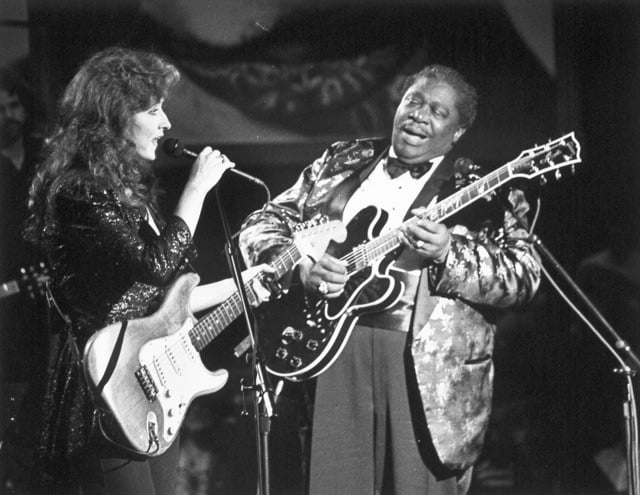

I clearly remember seeing Bonnie Raitt for the first time at a festival in my hometown of Melbourne, Australia. I felt like crying. It took me awhile to work out what was happening. Although women were the stars of the Classic Era, the blues is often considered a male-dominated genre. A glance through almost any guitar magazine will confirm the same dynamic – even more so. When I saw Bonnie, I realized that in my experience of the blues world to that point, I had never seen a woman (dare I say it – a mature woman) playing guitar like that, leading the band, and taking possession of a big stage. To finally see a role model was deeply empowering for a young player: thank you, Bonnie!



I played with her ten or eleven years after the Green Light record in 1982. In most cases when we go into the studio with her, we just start playing the material and pretty soon it finds its own way. She’s committed to the blues through her words and deeds, financially helping people like Sippie Wallace and others. Bonnie and I toured as a duet doing political, homeless, and environmental fundraisers because as a duet, it was the most cost effective way to bring her there without bringing in an entire band.

The phrasing Bonnie uses on the slide guitar is where she keeps blues traditions in her music. What happened with blues when it was first played was the superimposition of one set of scales on top of another set of scales. Most importantly singing a minor third over a major chord. This introduced dissonance.
In the wrong hands it can be painful; in the right it can be something of profound beauty. I think the way she employs it with her voice and glass is a thing of profound beauty. Like with cooking, it’s a matter of getting very delicate flavors right. Like Mac Rebennack, Taj Mahal, Ry Cooder, she studied. They were all passionate fans of blues, and they were all students and hungry for the information from the guys who invented the music. With Bonnie, it was Sippie Wallace. With Bonnie what’s important is that she really got that stuff down. And then didn’t stay there. She utilized it in other more contemporary forms where it could be applied. She does that very, very tastefully.

I came into the band in 1984. Bonnie brings in a song that she wrote or searched out and when you get into the studio, she knows where she’s heading because of the song. On one song, I was there early for my three o’clock session, and they rushed me asking if I had any brushes. As I reached down to grab my brushes to play, Bruce Hornsby started the intro to “I Can’t Make You Love Me.” I’d never heard it before, picked up the brushes, and thought this seems like a good place to come in. And that was the take. Allowing that magic to happen is her personality. I always say she’s very causative, she’s got something going and she puts her heart into it. She’s very generous onstage. If there is anyone in the audience that she’s worked with or she could honor musically, she’ll always talk about them to the audience. She always gives so much respect back.

Source: © Copyright Blues Music Magazine March 2016
Info: Blues Music Magazine












 Visitors Today : 103
Visitors Today : 103 Now Online : 2
Now Online : 2






